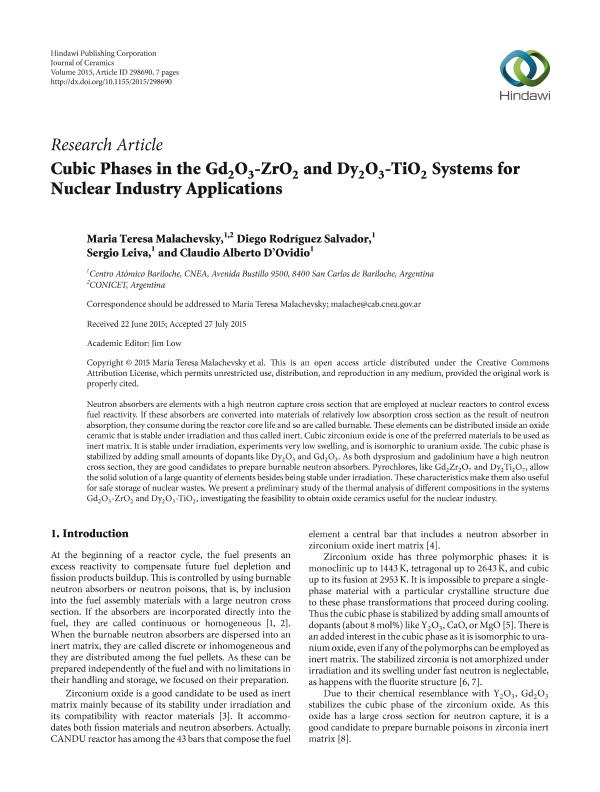Artículo
Cubic Phases in the Gd2O3-ZrO2 and Dy2O3-TiO2 Systems for Nuclear Industry Applications
Fecha de publicación:
08/2015
Editorial:
Hindawi Publishing Corporation
Revista:
Journal of Ceramics
ISSN:
2090-8628
Idioma:
Inglés
Tipo de recurso:
Artículo publicado
Clasificación temática:
Resumen
Neutron absorbers are elements with a high neutron capture cross section that are employed at nuclear reactors to control excess fuel reactivity. If these absorbers are converted into materials of relatively low absorption cross section as the result of neutron absorption, they consume during the reactor core life and so are called burnable. These elements can be distributed inside an oxide ceramic that is stable under irradiation and thus called inert. Cubic zirconium oxide is one of the preferred materials to be used as inert matrix. It is stable under irradiation, experiments very low swelling, and is isomorphic to uranium oxide. The cubic phase is stabilized by adding small amounts of dopants like Dy2O3 and Gd2O3. As both dysprosium and gadolinium have a high neutron cross section, they are good candidates to prepare burnable neutron absorbers. Pyrochlores, like Gd2Zr2O7 and Dy2Ti2O7, allow the solid solution of a large quantity of elements besides being stable under irradiation. These characteristics make them also useful for safe storage of nuclear wastes. We present a preliminary study of the thermal analysis of different compositions in the systems Gd2O3-ZrO2 and Dy2O3-TiO2, investigating the feasibility to obtain oxide ceramics useful for the nuclear industry.
Palabras clave:
Neutron Poison
,
Inert Matrix
,
Ceramic Absorbers
Archivos asociados
Licencia
Identificadores
Colecciones
Articulos(CCT - PATAGONIA NORTE)
Articulos de CTRO.CIENTIFICO TECNOL.CONICET - PATAGONIA NORTE
Articulos de CTRO.CIENTIFICO TECNOL.CONICET - PATAGONIA NORTE
Citación
Malachevsky, Maria Teresa; Rodríguez Salvador, Diego; Leiva, Sergio; D'Ovidio, Claudio Alberto; Cubic Phases in the Gd2O3-ZrO2 and Dy2O3-TiO2 Systems for Nuclear Industry Applications; Hindawi Publishing Corporation; Journal of Ceramics; 2015; 8-2015; 1-7; 298690
Compartir
Altmétricas




